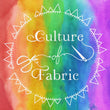History of Hawaiian Quilting
Before Hawaiian quilting there was Tapa/Kapa. The designs and techniques used in these traditional fabrics helped inspire the quilts of today. Cotton fabrics were introduced by the missionaries in the early 1800's. The people of Hawaii appropriated the styles and fabrics of the Euro-Americans. Today we see traditional and more modern forms of Hawaiian quilts but the sentiment and spirit of the sewing remains the same as the ancient peoples.
“What is Tapa and Kapa”, you ask? Tapa is barkcloth made from the bark of the mulberry, wakue, bush. Wakue is native to the islands of the Pacific such as Tonga, Fiji and as far as New Zealand. Tapa is not a woven material. Instead the bark is softened first by soaking, then beaten on a rock with i’e kuku, a wooden mallet. The bark can be as rough as burlap or as soft as silk. The islanders would decorate this textile with block prints or paint designs using natural dyes of light brown, red and black. Each artist was known for their particular designs. 
Kapa is the Hawaiian term for the same process of making tapa. Kapa translates to “ka” meaning ‘the’, and “pa” meaning ‘to strike or hit’. It describes the action of making the barkcloth. As the bark is beaten on the smooth rock it felts together to make a soft thin piece of fabric. The designs on the kapa are usually geometric. This fabric was used in making clothing, bedding and ceremonial robes.
Kapa moe - is the ancient quilt of the Hawaiian people. It was made from three layers of cloth. The top layer would be the decorative kapa, the middle batting was made of fluff from ferns and the back would be plain. The three layers would be sewn together and used as bedding. This technique was mainly used until the early 1800’s when missionaries began to impose the more civilized way of sewing.
The first written account of quilts, kuiki, in Hawai’i is when the ship Thaddeus landed on the shore of Kawaihae. The first company of American missionaries left Boston in October 1819 aboard the ship Thaddeus. After a turbulent eighteen-thousand-mile-voyage, they finally arrived at the end of March in 1820. The wives of the missionaries invited the female members of the Ali’i, the royal families, to a sewing circle onboard the ship.

Lucy Thurston, missionary wife, states in her journal of April 4, 1820, “Kalakua brought a web of white cambric [linen] to have a dress made for herself in the fashion of our ladies...the four Native women of rank were furnished with calico patchwork to sew--a new employment for them.”
Over the years missionary women would create curriculum in schools that would teach the women and girls the basics of civilized life. Sewing, darning, weaving straw hats, samplers, knitting stockings, and pieced quilt tops using cotton. The Hawaiians were not fond of cutting large pieces of fabric into smaller pieces just to sew them back together. Over time, the native women brought their own ideas to quilt making. Around the 1840’s we started to see these new designs that are now traditional Hawaiian patterns.
Quilting was a generational activity. Three to four generations of women/girls would sit and tell stories about their culture and spiritual traditions. The younger generations could remember their family members when admiring the quilts. It is as if they could feel the warmth and closeness of their relatives.

A Hawaiian quilt is made of three layers: top, batting and backing. The top is made with two contrasting colors, often red and white in the beginning but any color could be used. A native fern from Hawai’i was first used as batting. Later, when sheep were introduced to the island, they used wool. Some islands cultivated cotton so after the harvest children would pick the leftover cotton and bring it home to remove the seeds and card it by hand.
The patterns were made from the local flora. It is said that a woman was laying fabric out in the grass when the shadow of the Ulu, breadfruit tree, made an outline that she cut along. She placed the cut fabric on a contrasting fabric then appliqued and quilted. Each pattern has a meaning that tells a story. It may be connected to the flora or a meaningful life event. The quilts are given names to bring life to them. Humans and animals were never used as it was thought that the spirit of the animal would be trapped and thus becoming restless.




The patterns are created on the eighth or fourth fold on paper like a snowflake. Pinned or traced to the fabric the entire design is cut at once on the eighth position (photo on the left), this ensures the symmetry that Hawaiian quilts are best known for. The design is opened, basted to the contrasting fabric, then a hidden-hand applique stitch is used. When the top is finished the three layers are joined. An echo stitch is used from the center of the quilt radiating out like ripples or waves. The quilts may be small like a pillow or wall hanging or as big as a king-size bed cover.

A company I recommend is Poakalani & Co. Poakalani is a generational company from father to daughter. They have wonderful patterns for purchase and for free. This is the link to their free patterns: http://poakalani.net/birth-month-flower-collection/ . The Ulu or breadfruit is suggested to be the first pattern as a new quilter to insure the quilter will continue to make many additional quilts. Some believe it will also assure the quilter of adequate food and a lifetime of prosperity. We can honor the Ulu’ in a Hawaiian quilt as the symmetrical design honors the survival of the Hawaiian people. Each quilt is imbued with the mana, spirit, of the maker. Sew with love and peace and these will be passed onto the recipient.
In the late 1800's a national quilt was embraced. The last queen of Hawai'i, Lili'uokalani, was an expert quilter. As the fall of the Royal court came about in 1898 the people of Hawai'i rallied behind their beloved queen. Quilters incorporated the Hawaiian flag and coat-of-arms motifs on their quilts to honor their heritage and show loyalty to the Hawaiian nation and monarchy.

The four pieced Hawaiian flags on this quilt are arranged around appliquéd and embroidered details from the royal crown and coat-of-arms, including the two guardians of King Kamehameha I (1756-1819), the first king of Hawaii. “HAWAII PONOI / UA MAU KE EA O KA‘AINA IKA PONO” (THE LIFE OF THE LAND IS PERPETUATED BY RIGHTEOUSNESS) is appliquéd in the center. (Smithsonian Institute)
I hope you enjoyed a little, well maybe long history lesson today. I will continue to write about Hawaiian quilts next week and go over the more modern motifs and designs along with the special quilting techniques used. I will show you how to make a pattern and how to place the top pieces together.
Until next time, "Aloha!"
S. Geffre, 16 April 2021
References:
Museum of New Mexico Press and Michigan State University Museum, (1997), "To Honor and Comfort: Native Quilting Traditions", Edited by Marsha MacDowell, C. Kurt Dewhurst, Museum of New Mexico Press
Katie Young, October 28, 2002, A Stitch In Time, State of Hawai’i Department of labor and Industrial Relations, https://careerkokua.hawaii.gov/career/article/?id=11, access 12 April 2021
L. Rhodes, November 15, 2001, Overview of Hawaiian History, https://www.nps.gov/parkhistory/online_books/kona/history5b.htm , greene/history5b.htm, 12 April 2021
D. Tahany, Differences in Polynesian Kapa/Tapa, http://www.kapahawaii.com/storing-hawaiian-kapa/46-differences-in-polynesian-kapa-tapa.html, 15 April 2021
C. Fondi, 12-2017, The Legacy of the Breadfruit, https://media.rainpos.com/5770/the_legacy_of_the_breadruit_tree.pdf, 16 April 2021






So interesting. I knew some of this but not all. I am taking a trip to Hawaii very soon and looking forward to it even more!
Leave a comment